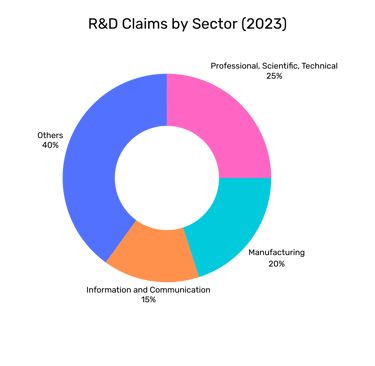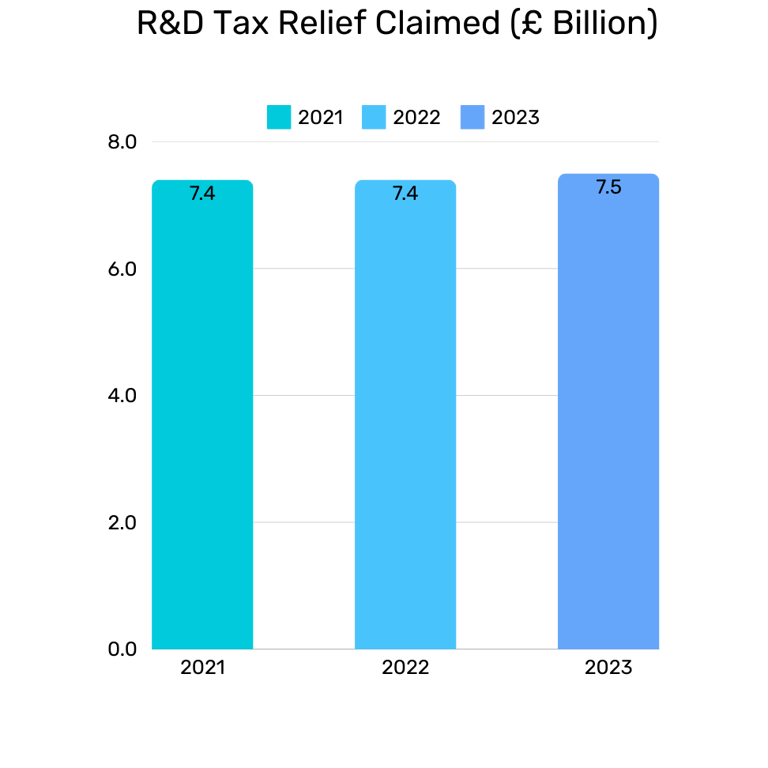Key Trends in R&D Tax Relief Claims (2021-2023)
The UK’s Research and Development (R&D) Tax Relief initiative has provided crucial support for innovation-focused businesses. In this blog, we delve into the trends over the last three years, highlighting key statistics and illustrating how the landscape of R&D tax relief has evolved.


Total Claims and Value of Relief
The number of R&D tax relief claims and the total value awarded have fluctuated in recent years:
- 2021: A peak in the number of claims with over 85,900 applications, reflecting widespread adoption.
- 2022: Claims decreased slightly to 83,240 due to stricter HMRC compliance measures.
- 2023: A significant drop to 65,690 claims, likely caused by new administrative policies. Despite fewer claims, the total value of relief increased to £7.5 billion, indicating higher average claim values.
Sectors Benefiting Most From R&D Tax Relief
Certain industries consistently benefit from R&D tax relief. These include:
- Manufacturing: A significant contributor, particularly in process optimization and new material development.
- Professional, Scientific, and Technical Activities: Innovations in biotech, IT, and engineering lead the charge.
- Information and Communication: Growth in software and technology development has driven claims.
Challenges and Rejections
While the scheme has empowered businesses, stricter HMRC measures have posed challenges:
- Administrative Compliance: Tightened rules have increased scrutiny, causing delays and rejections.
- Errors in Documentation: A common issue for SMEs submitting incomplete or non-compliant claims.




Contact us for a free consultation and we will assess your eligibility.
